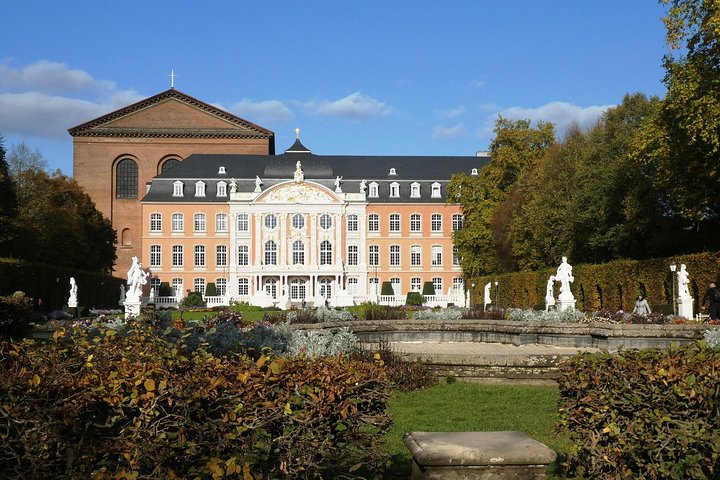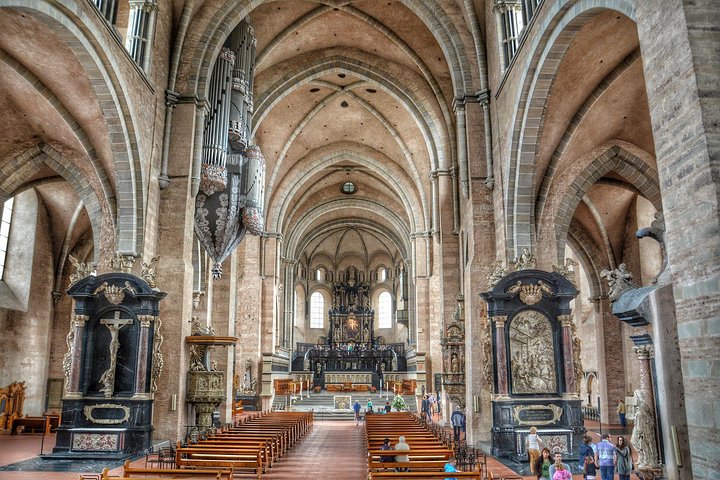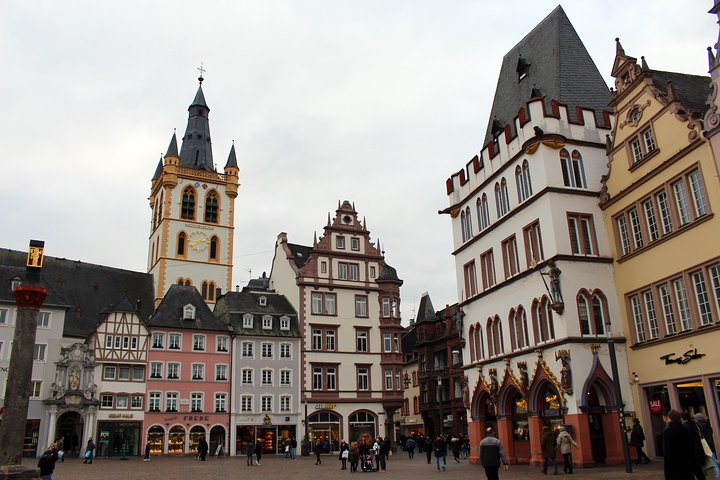Trier - Private Guided Walking Tour
Share this tour

Offered languages
- German
- English
- French
Do a walking tour in Trier, one of the most charming cities in Germany. Learn from your guide about its history, and pass by sites like St. Gangolf Kirche and St. Peter's Cathedral. Step into the Basilica of Constantine and marvel at well-preserved walls and stroll through the main market's Market Cross, a medieval trading hub. You will feel transported back to the times of Roman grandeur, explore the ancient world's largest city gate, Porta Nigra, a UNESCO site.
What's Included
Meeting and pickup
Meeting Point at hotel possible (if centrally located).
Itinerary
-
1Porta Nigra
Explore Porta Nigra, a UNESCO World Heritage Site and the largest city gate from the ancient world, built with grey sand after 170 AD. Pass by Dreikonigenhaus, a unique house in the city of Trier, and get to know what makes it famous.
20 minutes • Admission ticket free -
Frankenturm (Pass by)
Next, see the famous fortified brickwork residential tower known as Frankenturm, built in the 11th century. Walk through the Market Cross on the main market, a market square famous for its medieval trading hub. Here, you will find many shops for urban shopping and cafes.
Admission ticket free -
2St. Gangolf
Visit the Roman Catholic church known as St. Gangolf Kirche, dedicated to St. Gangulphus, the second-oldest church in the city. Walk by Saint George's Fountain in the Kornmarkt, built between 1750 and 1751 by the same builder of the Electoral Palais.
15 minutes • Admission ticket free -
3Trier Saint Peter's Cathedral
Visit the oldest church in Germany with the largest religious structure of the city. Its foundation was built by the Roman brick in the early 4th century.
15 minutes • Admission ticket free -
4Konstantin-Basilika (Evangelische Kirche zum Erlöser)- Evangelische Kirchengemeinde Trier
Afterward, visit the Basilica of Constantine, which was built around 310 AD. You will find that the inner walls of the cathedral have been kept intact, without any changes, even after the repairing of the building due to World War II. Get to see the Throne Room of Constantine the Great and subsequent Roman Emperors from the 4th century. Learn about the Roman structures in the largest throne room, which is now used as a Protestant church.
20 minutes • Admission ticket free -
5Market Cross on the main market
In the center of the city this market square was famous for its medieval trading hub. Here, you will find many shops for urban shopping and cafes.
10 minutes • Admission ticket free -
6Saint George's Fountain
See the fountain located in the Kornmarkt, built between 1750 and 1751 by the same builder of the Electoral Palais.
15 minutes • Admission ticket free -
7Electoral Palace
Then, continue to the 16th-century residence of the Archbishops and Electors of Trier and, finally, the large Roman Bath complex, which was constructed in the 4th century AD. The walking tour ends here.
15 minutes • Admission ticket free
Additional info
- Public transportation options are available nearby
- Not recommended for travelers with poor cardiovascular health
- Suitable for all physical fitness levels
Tags
Cancellation Policy
All sales are final. No refund is available for cancellations.
Show more
Cancellation Policy
This experience is non-refundable and cannot be changed for any reason. If you cancel or ask for an amendment, the amount you paid will not be refunded.
Rating
You will not receive a refund if you cancel.
Your guide to the flawless travel experience







